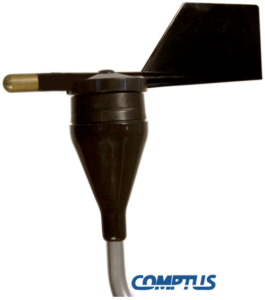When it comes to wind direction indicator, most people think of an airport wind indicator. While that is one use, there are many others.
One of the oldest examples of an indicator is the weathervane – the one with a rooster on top of four arrows that indicate wind direction. Another longstanding option is the windsock, which is still used today at many airports. Both of these, as well as modern-day indicators, move according to the direction from which the wind blows and with minimal resistance. That means that even with a light breeze, the indicator will show you the direction of the wind.

-
Airports
– A wind direction tetrahedron is the most commonly used. This type of indicator has a large yet lightweight framework in the shape of a tetrahedron, which is triangular. Covering this framework is either wood, fabric, or thin metal, which is then painted in bright red, orange, or another color. The framework then mounts on a pivot, which swings freely when the wind blows. At airports, this indicator always points into the wind, allowing approaching pilots to determine the correct direction to land safely.
-
Crop Dusting
– Crop dusting pilots also rely on wind indicators to ensure they spray chemicals on crops without affecting nearby businesses or homes.
-
Ships and Boats
– Many ships and boats, especially larger vessels, have mounted wind indicators that point the direction of the wind. Based on that, captains can maneuver ocean waters more efficiently and safely.
-
Chemical Plants
– It is also common to see wind indicators at chemical plants. That way, if there should be a gas leak, officials immediately know the direction of toxic fumes. As a result, chemical plants have the ability to send out early warnings to neighboring communities.
-
Highways
– The wind along certain highways can reach dangerous levels. For truckers and people driving RVs, SUVs, and other taller vehicles, the indicator helps them make decisions for safe travel.
Thanks to new advances, virtually anyone can benefit from an indicator for wind direction. One example is the Comptus A75-302, which features a tail made of durable injection-molded polycarbonate and a base made from a conductive material that dissipates static. Regarding how to read this wind indicator, you would get information from the generated analog output signal.
To learn more about Comptus weather-related devices, please visit our website or call us today. We offer the highest quality products available and would love the opportunity to help you select the right device for your needs.

